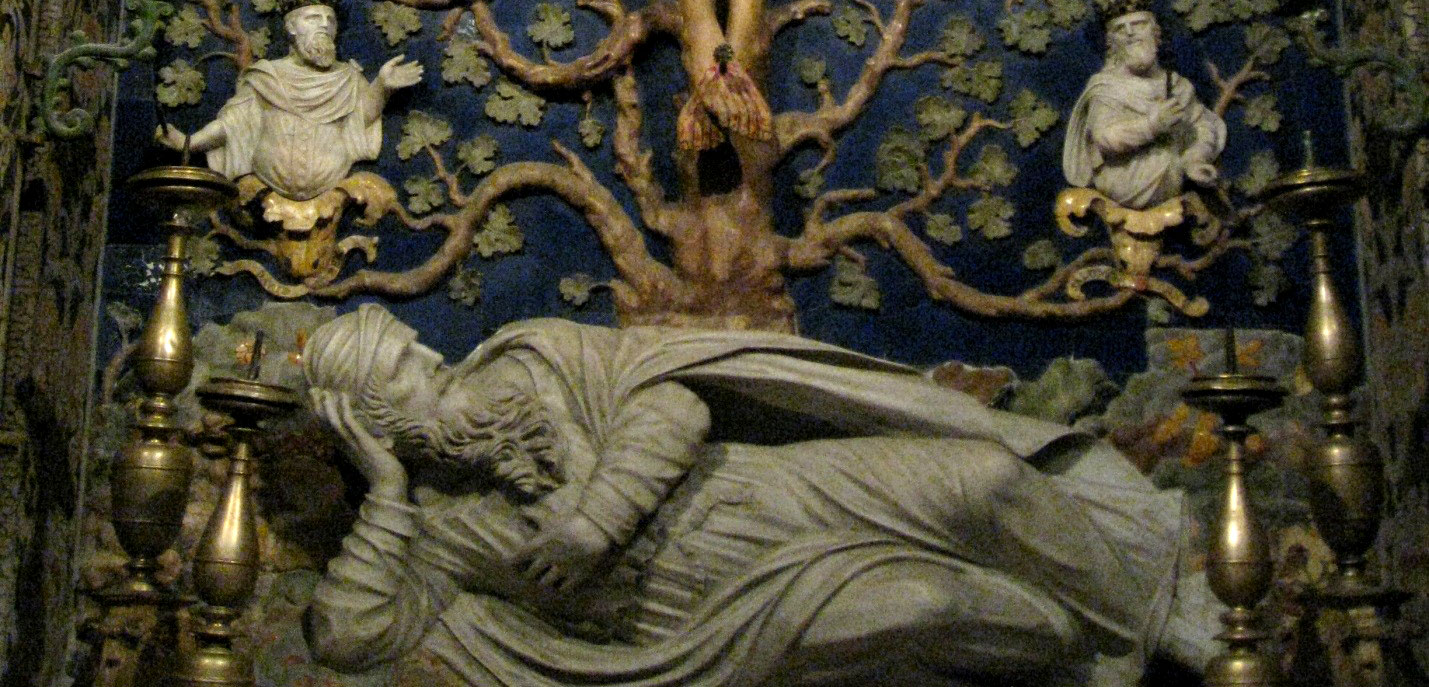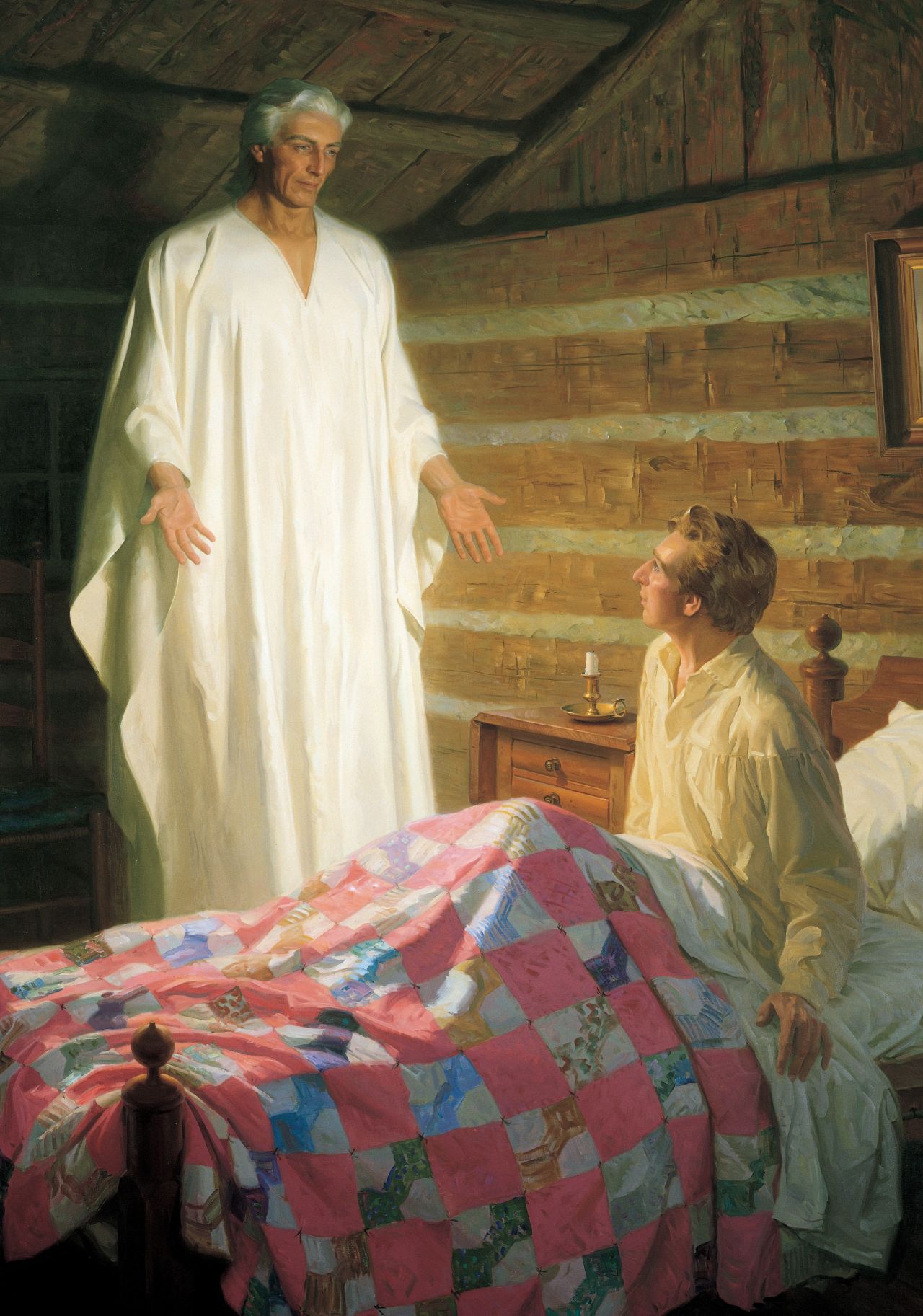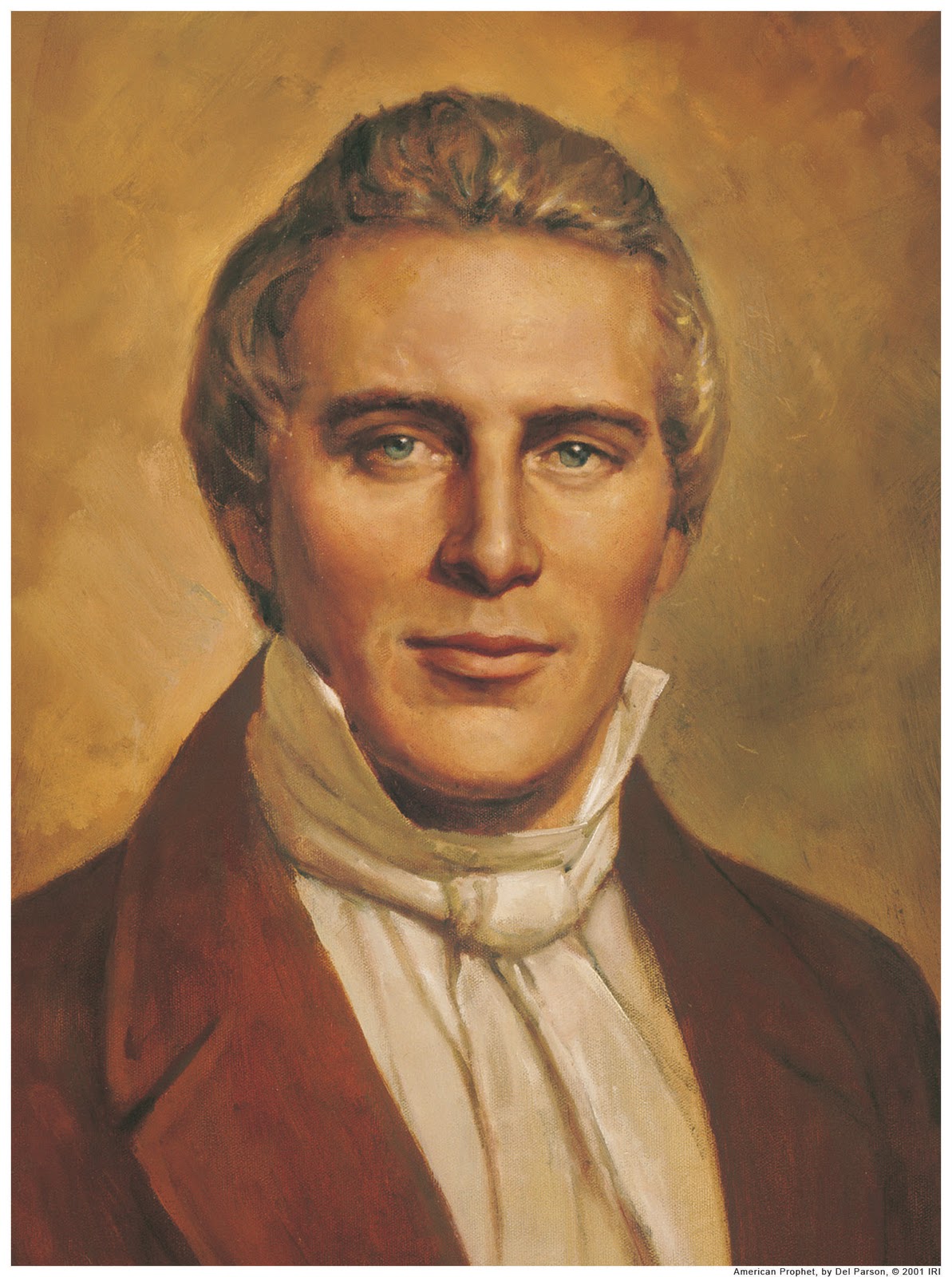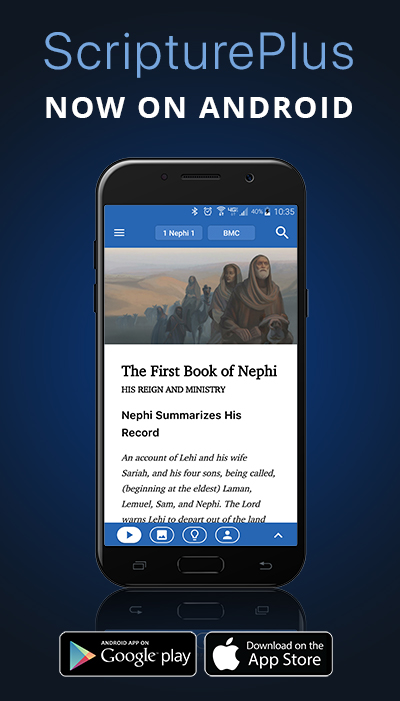/ KnoWhys / KnoWhy #50
Why Did Moroni Quote Isaiah 11 to Joseph Smith?

Post contributed by BMC Team
March 9, 2016
D&C KnoWhy #50

“And in that day there shall be a root of Jesse, which shall stand for an ensign of the people; to it shall the Gentiles seek; and his rest shall be glorious.”
The Know
Four years before the first word of the Book of Mormon was translated, Isaiah’s words were connected to that sacred record. When Moroni visited the boy Joseph Smith on September 23, 1823, sources indicated that he quoted as many as 31 biblical passages. Of these, ten were from Isaiah.1 The longest quotation was from Isaiah 11, which Moroni said “was about to be fulfilled” (Joseph Smith—History 1:40). Moroni, it would seem, was making a connection between the prophecy in Isaiah 11 and the coming forth of the Book of Mormon.
Isaiah 11 talks about “a root of Jesse, which shall stand for an ensign of the people” and says that the Lord “shall set up an ensign for the nations, and shall assemble the outcasts of Israel, and gather together the dispersed of Judah from the four corners of the earth” (2 Nephi 21:12; Isaiah 11:12). A similar prophecy also appears in 2 Nephi 15:26 (Isaiah 5:26), which reads: “And he will lift up an ensign to the nations from far, and will hiss unto them from the end of the earth.”

While in Far West, Missouri, Joseph Smith fielded some questions on Isaiah, including the question, “What is the root of Jesse spoken of in the 10th verse of the 11th chapter?” (D&C 113:5). The Lord responded, “it is a descendant of Jesse, as well as of Joseph, unto whom rightly belongs the priesthood, and the keys of the kingdom, for an ensign, and for the gathering of my people in the last days” (D&C 113:6).
While it is uncertain whether this is referring to Jesus, Joseph Smith, or someone else, Latter-day Saints have often interpreted it as including a reference to Joseph,2 for it was through Joseph that the priesthood and the keys were restored, including the keys for the gathering of Israel (D&C 110). While it is not known if Joseph was a descendant of Jesse, the Book of Mormon tells us that he is a descendant of Joseph (2 Nephi 3:6, 15).

Since the earliest days of the Restoration, Latter-day Saints have interpreted the coming forth of the Book of Mormon as the “ensign” meant to signal to all nations that the gathering of Israel has begun.3 In his prophetic commentary following the Isaiah block, although not using the word “ensign,” Nephi would link the coming forth of the Book of Mormon with the gathering of Israel, saying, “And when the two nations shall run together the testimony of the two nations shall run together also” (2 Nephi 29:8). To the same end, the resurrected Lord promised that the coming forth of the Book of Mormon would be “a sign” to the world of the beginning of the final gathering and fulfillment of God’s covenants (3 Nephi 21:1–7).4
The Why

Ann Madsen observed, “Joseph Smith was inspired, motivated, and empowered profoundly by his connection to Isaiah’s teachings.”5 This connection began with the First Vision when the Savior used the words of Isaiah to describe the state of the Christian world (see Joseph Smith—History 1:19; cf. Isaiah 29:13). The connection between the coming forth of the Book of Mormon and Isaiah 11:10–13 was suggested to Joseph Smith by Moroni’s quotation of it when he first visited Joseph in 1823. Thus, the Restoration was both predicted in and influenced by the writings of Isaiah.
Seeing Joseph Smith as the root of Jesse and the Book of Mormon as the ensign signals to all people that God has set his hand to commence the conclusion of his gathering work in the last days. The Book of Mormon is clearly no ordinary book, but is much more, even a miraculous work and a miracle (as the Hebrew in Isaiah 29:14 can be translated). It is the Father’s sign that he has “set his hand again the second time to recover the remnant of his people” (2 Nephi 21:11; 3 Nephi 21:7).
The Book of Mormon beckons to all to come, to hear, and to receive the call, that “the work of the Father” (3 Nephi 21:26) may go forth. By this signal, all can see that “the field is white already to harvest” (D&C 4:4). Going forth under this banner, everyone who desires to serve God and is called to the work “layeth up in store that he [or she] perisheth not, but bringeth salvation to his [or her] soul” (D&C 4:4).
Further Reading
Steven C. Harper, Making Sense of the Doctrine & Covenants: A Guided Tour through Modern Revelation (Salt Lake City, UT: Deseret Book, 2008), 418–420.
Terryl L. Givens, By the Hand of Mormon: The American Scripture that Launched a New World Religion (New York: Oxford University Press, 2002), 64–71.
Ann Madsen, “Joseph Smith and the Words of Isaiah,” in Isaiah in the Book of Mormon, ed. Donald W. Parry and John W. Welch
1. Ann Madsen, “Joseph Smith and the Words of Isaiah,” in Isaiah in the Book of Mormon, ed. Donald W. Parry and John W. Welch (Provo, UT: FARMS, 1998), 356–357. Other than Isaiah 11, these include Isaiah 1:7, 23–24, 25–26; 2:1–4; 4:5–6; 29:11, 13, 14; 43:6.
2. See, for example, Sidney B. Sperry, Doctrine and Covenants Compendium (Salt Lake City: Bookcraft, 1960), 615–17; Michael J. Preece, Learning to Love the Doctrine and Covenants (Salt Lake City: MJP Publishing, 1988), 314–15; Conrad Knudson, Doctrine and Covenants Guidebook (Bountiful, Utah: Horizon Publishers, 1996), 238–239; Richard O. Cowan, Answers to Your Questions About the Doctrine and Covenants (Salt Lake City: Deseret Book, 1996), 131–132; Joseph Fielding McConkie and Craig J. Ostler, Revelations of the Restoration: A Commentary on the Doctrine and Covenants and Other Modern Revelation (Salt Lake City: Deseret Book, 2000), 909–913; Stephen E. Robinson and H. Dean Garrett, A Commentary on the Doctrine and Covenants (Salt Lake City: Deseret Book, 2005), 4:95–102; Steven C. Harper, Making Sense of the Doctrine and Covenants: A Guided Tour Through Modern Revelations (Salt Lake City: Deseret Book, 2008), 418–420; Alexander L. Baugh, “Historical context and overview of Doctrine and Covenants 113,” in Doctrine and Covenants Reference Companion, ed. Dennis L. Largey (Salt Lake City: Deseret Book, 2012), 823–824.
3. Terryl L. Givens, By the Hand of Mormon: The American Scripture that Launched a New World Religion (New York: Oxford University Press, 2002), 64–71.
4. Victor L. Ludlow, “The Father’s Covenant People Sermon: 3 Nephi 20:10-23:5,” in Third Nephi: An Incomparable Scripture, ed. Andrew C. Skinner and Gaye Strathearn (Salt Lake City and Provo. UT: Deseret Book and Neal A. Maxwell Institute for Religious Scholarship, 2012), 161–165.
5. Madsen, “Joseph Smith and the Words of Isaiah,” 365.

